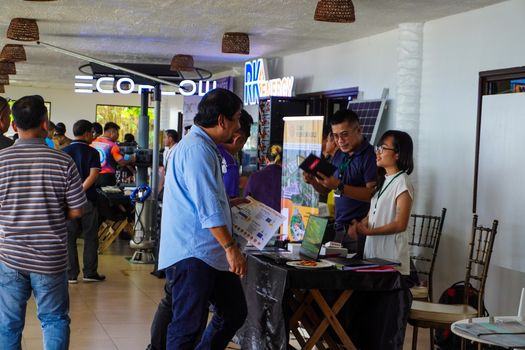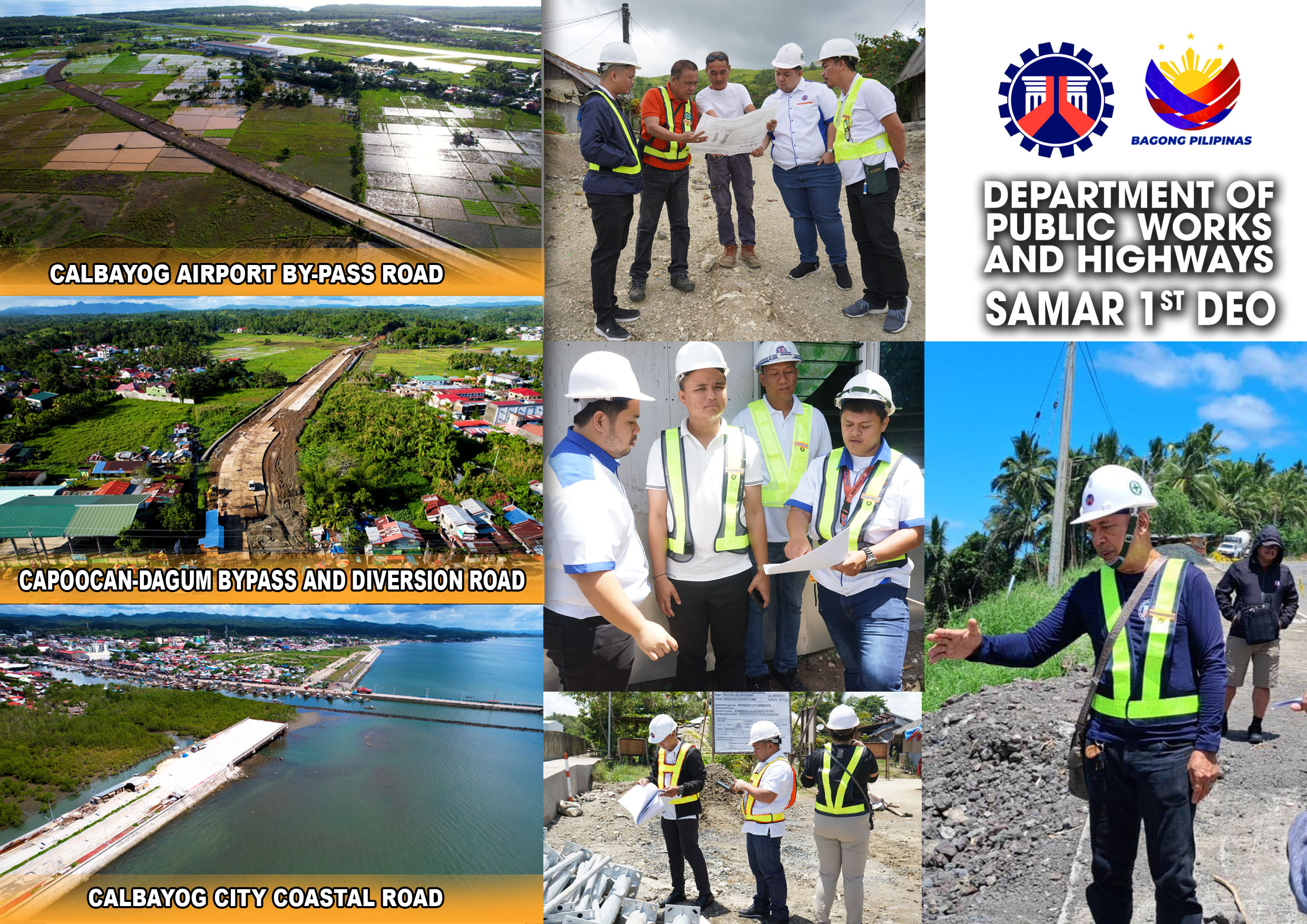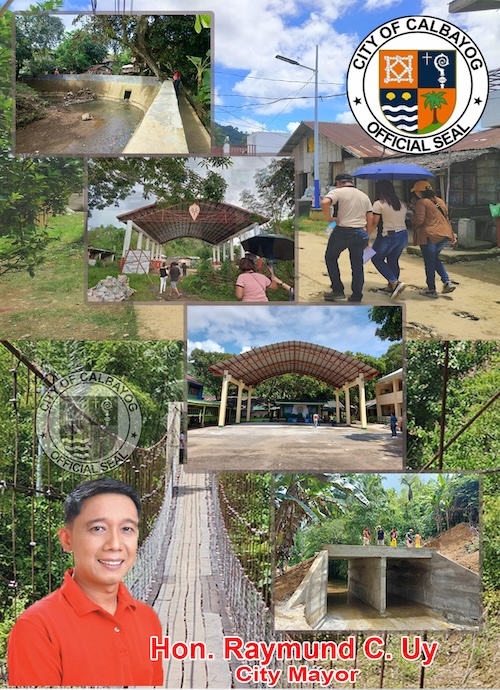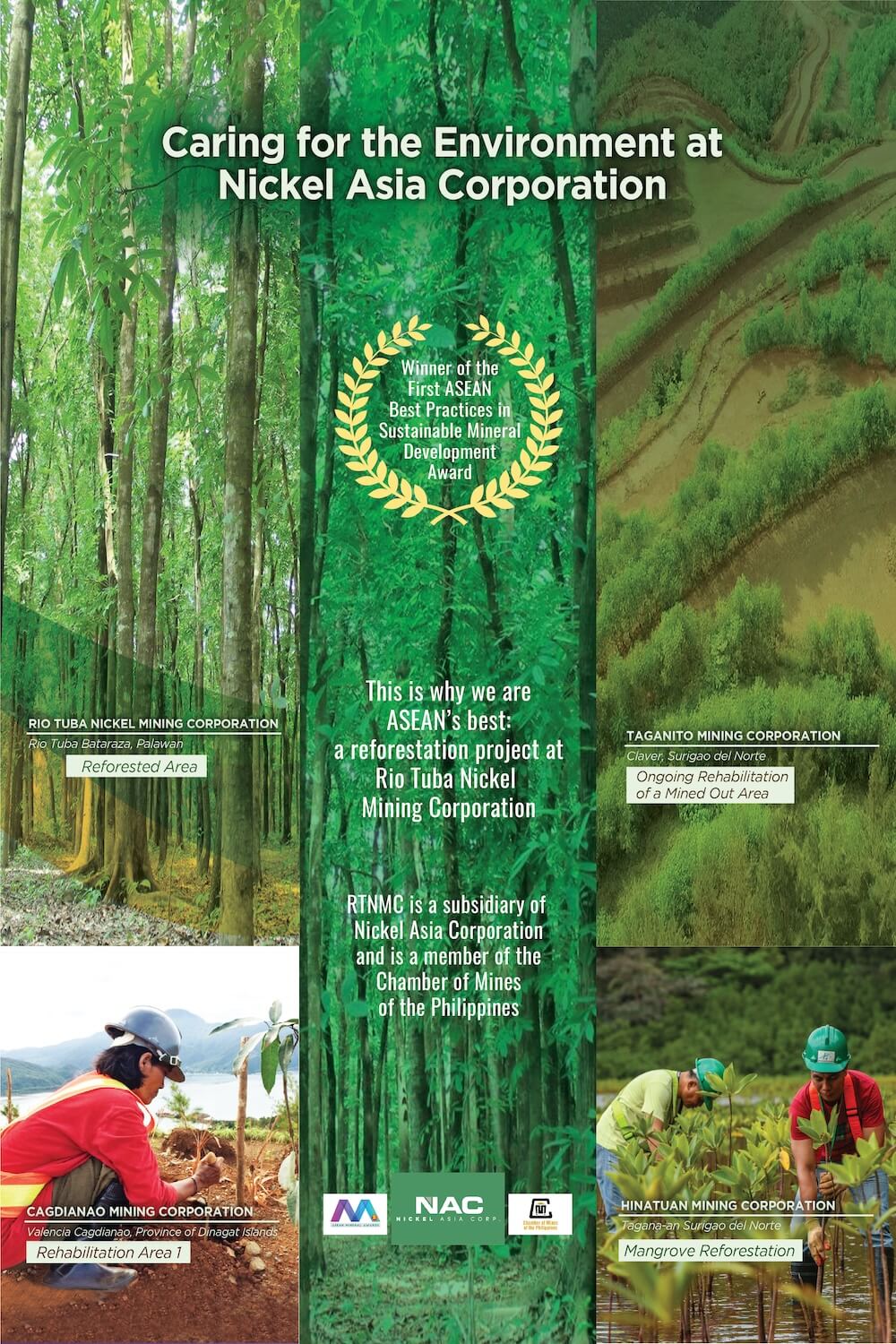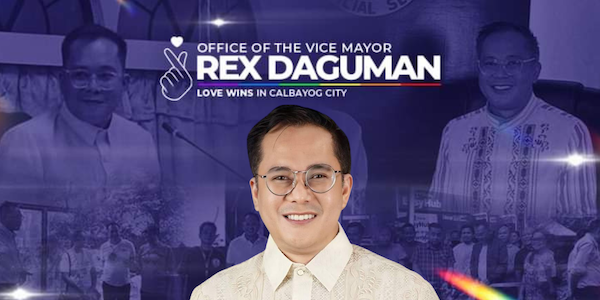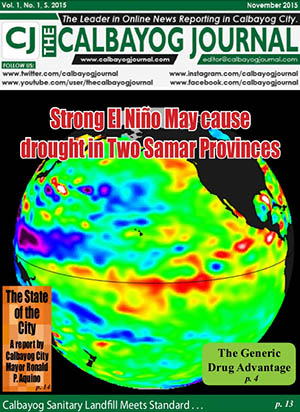Story/Photos: ELMER RECUERDO

TACLOBAN CITY – The tragedy of a family of seven in a fire that happened ten years ago continues to haunt disaster responders as they push for the use of renewable energy in all levels of humanitarian action to avoid its recurrence.
The fire happened last May 28, 2014 in the fishing village of Costa Brava, then a tent city, six months after Typhoon Yolanda while 38-years old Maria Elisa Ocenar and her six children aged four months to 12 years old were asleep for the night and their kerosene lamp was toppled over catching their polyester-made tent on fire.
All the family members were trapped inside their tent and died. They survived the wrath of Yolanda but not the fire.
"This is very personal to me. We were able to prepare the community on what to do when another storm surge happens in the future but we were not able to prepare them for fire," says teary-eyed Arturo Tahup, the disaster resilience manager of Institute for Climate and Sustainable Cities, as he recounts the incident that had somehow remained fresh in his mind.
The fire happened last May 28, 2014 in the fishing village of Costa Brava, then a tent city, six months after Typhoon Yolanda while 38-years old Maria Elisa Ocenar and her six children aged four months to 12 years old were asleep for the night and their kerosene lamp was toppled over catching their polyester-made tent on fire.
All the family members were trapped inside their tent and died. They survived the wrath of Yolanda but not the fire.
"This is very personal to me. We were able to prepare the community on what to do when another storm surge happens in the future but we were not able to prepare them for fire," says teary-eyed Arturo Tahup, the disaster resilience manager of Institute for Climate and Sustainable Cities, as he recounts the incident that had somehow remained fresh in his mind.

Tahup said that a few days before the incident his group conducted a training on storm surge and typhoon contingency and community drill for three villages of San Jose district including Costa Brava.
"We were satisfied with the outcome because we were able to evacuate the residents of Costa Brava to Astrodome. It gave us a sense of comfort knowing that the community would know what to do when a storm like typhoon Yolanda occurs in the future," he said. "Then a few days later this fire happened."
Tahup said the donor of the tents, the United Nations High Commissioner on Refugees (UNHCR) also provided the residents with solar lamps but not everybody was able to get them, including the Ocenar family.
"This incident was a wakeup call for us, disaster responders, on the importance of safe energy in all aspects of humanitarian response," he said. "If the Ocenar family were able to have solar lamps this could not have happened."
"We were satisfied with the outcome because we were able to evacuate the residents of Costa Brava to Astrodome. It gave us a sense of comfort knowing that the community would know what to do when a storm like typhoon Yolanda occurs in the future," he said. "Then a few days later this fire happened."
Tahup said the donor of the tents, the United Nations High Commissioner on Refugees (UNHCR) also provided the residents with solar lamps but not everybody was able to get them, including the Ocenar family.
"This incident was a wakeup call for us, disaster responders, on the importance of safe energy in all aspects of humanitarian response," he said. "If the Ocenar family were able to have solar lamps this could not have happened."
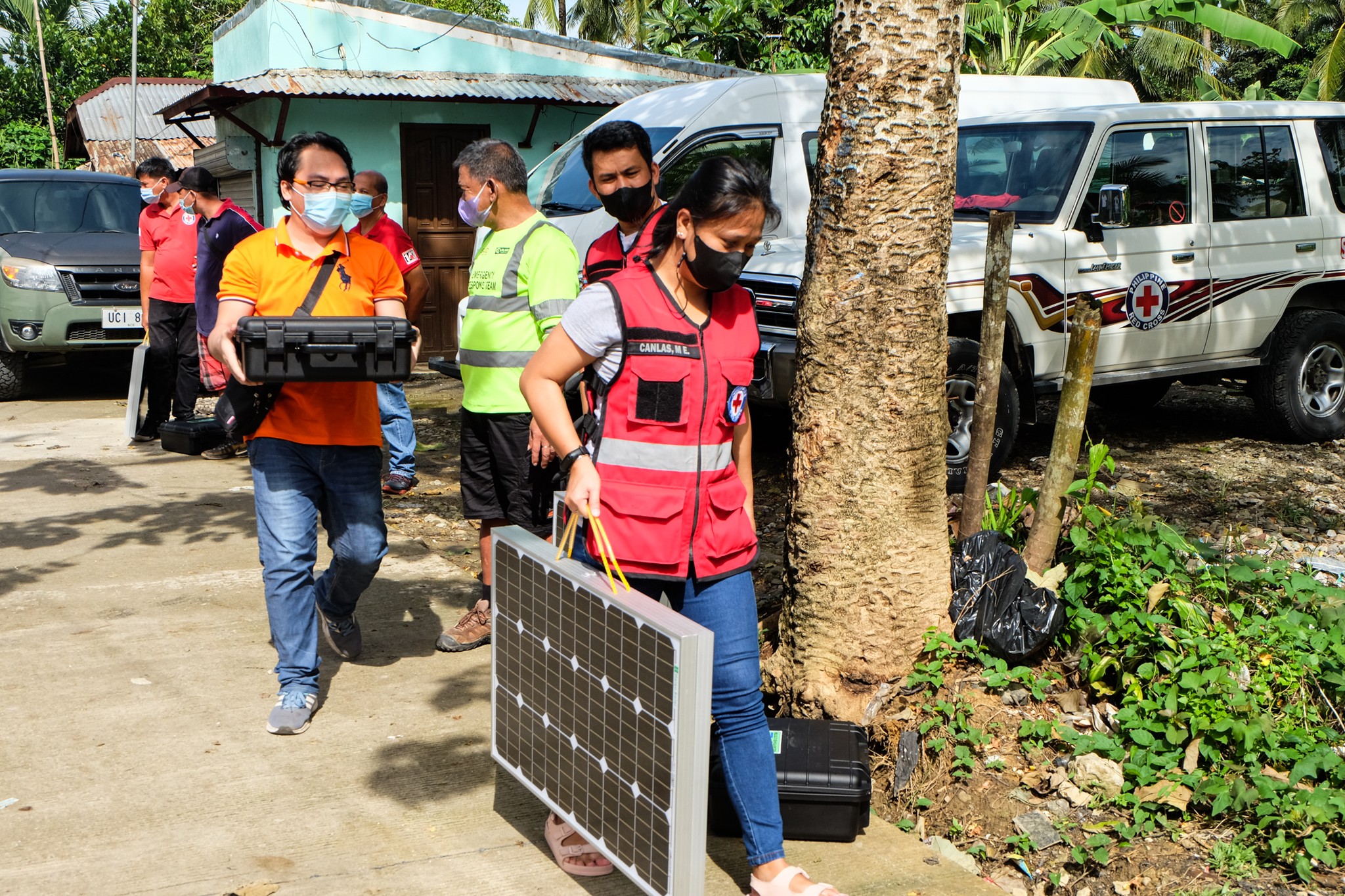
Integrating RE in disaster plan
Lord Byron Torrecarion, regional director of the Office of Civil Defense in Eastern Visayas, said the use of renewable energy in disaster management is crucial especially in the early recovery stage.
"Having a renewable energy that will not run out is critical in disaster response," he said. "Solar home systems can provide power to critical infrastructures such as hospitals, emergency shelters and water treatment plants.
In the previous disasters that hit Eastern Visayas such Typhoon Yolanda and the magnitude 6.2 earthquake in 2017, the whole region was without electricity for months affecting vital services.
Lord Byron Torrecarion, regional director of the Office of Civil Defense in Eastern Visayas, said the use of renewable energy in disaster management is crucial especially in the early recovery stage.
"Having a renewable energy that will not run out is critical in disaster response," he said. "Solar home systems can provide power to critical infrastructures such as hospitals, emergency shelters and water treatment plants.
In the previous disasters that hit Eastern Visayas such Typhoon Yolanda and the magnitude 6.2 earthquake in 2017, the whole region was without electricity for months affecting vital services.
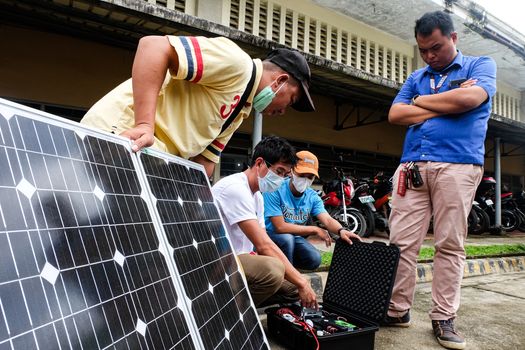
Torrecareon said that in the recent flooding in the CARAGA region and Davao de Oro, OCD was able to deploy a portable water filtration system using solar panels.
He added that the use of clean and renewable energy also helps combat climate change due to its substantial contribution in the country's energy mix.
"We can reduce greenhouse gases, greenhouse emissions, improve energy security and provide millions of people access to clean, renewable and reliable energy," he added.
He added that the use of clean and renewable energy also helps combat climate change due to its substantial contribution in the country's energy mix.
"We can reduce greenhouse gases, greenhouse emissions, improve energy security and provide millions of people access to clean, renewable and reliable energy," he added.
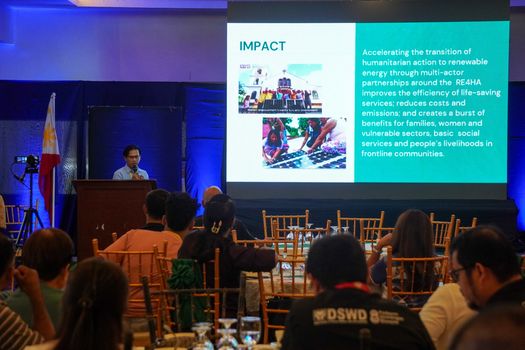
Disaster management plans
In 2022, the UNHCR published an "Emergency Handbook" that puts emphasis on the use of renewable energy in disaster response.
Among the key points are to ensure potential energy needs are addressed during the emergency preparedness planning and response phase, particularly related to household level needs for lighting and cooking, and for community facilities (water, education, health).
UNHCR also emphasized to ensure that funding proposals and response plans address the energy needs of affected people as well as the facilities serving them
"All refugees, host communities and support structures should be able to satisfy their energy needs in a sustainable manner, without fear or risks to their health, well-being and personal security, while ensuring the least possible environmental impact," it said.
However, the Philippines' updated 10-year National Disaster Risk Reduction and Management Plan (NDRRMP) for 2020-2030 is silent on the use of renewable energy in disaster management.
In 2022, the UNHCR published an "Emergency Handbook" that puts emphasis on the use of renewable energy in disaster response.
Among the key points are to ensure potential energy needs are addressed during the emergency preparedness planning and response phase, particularly related to household level needs for lighting and cooking, and for community facilities (water, education, health).
UNHCR also emphasized to ensure that funding proposals and response plans address the energy needs of affected people as well as the facilities serving them
"All refugees, host communities and support structures should be able to satisfy their energy needs in a sustainable manner, without fear or risks to their health, well-being and personal security, while ensuring the least possible environmental impact," it said.
However, the Philippines' updated 10-year National Disaster Risk Reduction and Management Plan (NDRRMP) for 2020-2030 is silent on the use of renewable energy in disaster management.
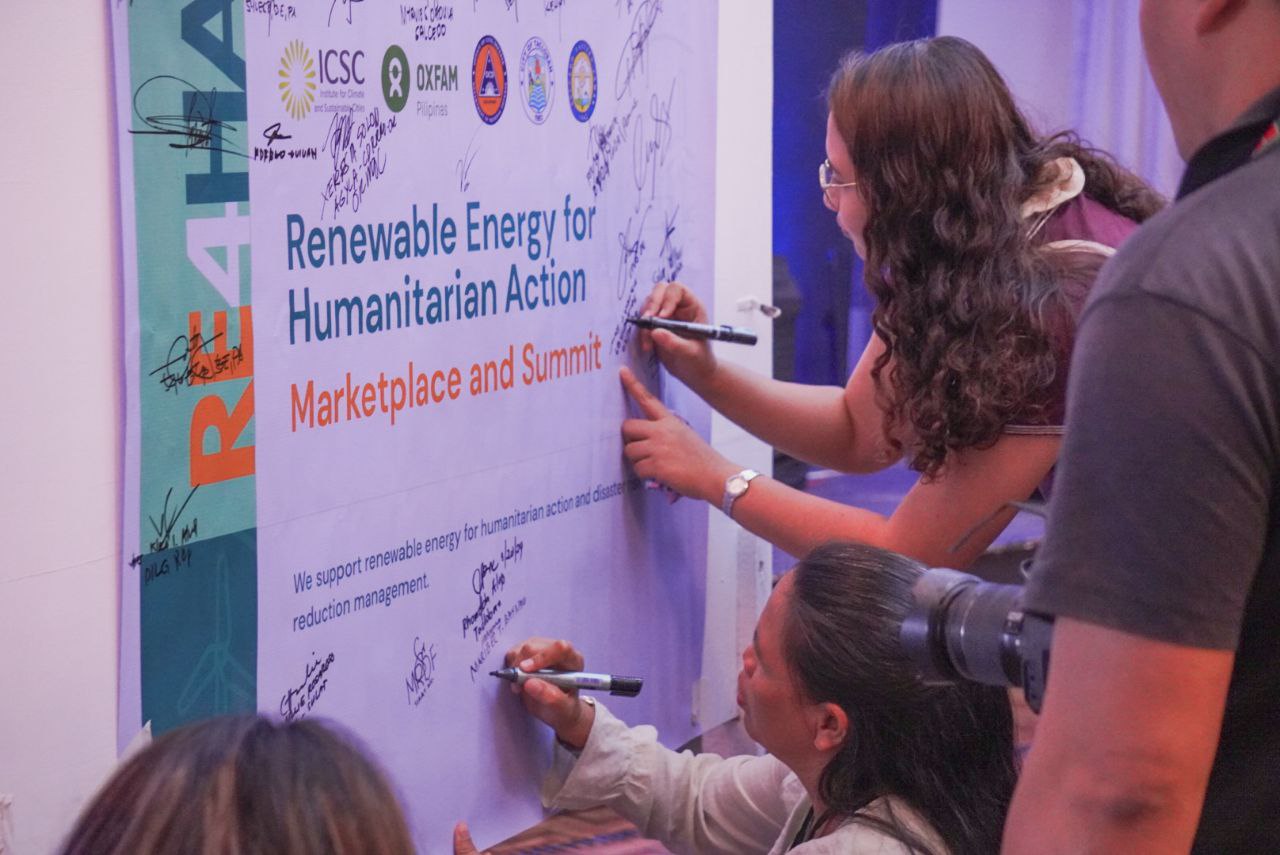
Roadmap for RE integration
Just before the Holy Week, humanitarian responders, local government units, national government agencies, renewable energy suppliers and manufacturers and other stakeholders conducted a two-day forum to draft a roadmap on how to integrate renewable energy in their disaster risk reduction plans.
The forum, organized by nongovernment ICSC and Oxfam Pilipinas, draws up plans on how they will integrate renewable energy in their local development plans.
"The forum gives humanitarian actors an opportunity for collaboration and links up to further the agenda which is to have renewable energy in humanitarian action," says Elaine Joyce Borejon, Oxfam Pilipinas' research and advocacy officer on Just Energy Transition.(CJ/jmm/ER)
Just before the Holy Week, humanitarian responders, local government units, national government agencies, renewable energy suppliers and manufacturers and other stakeholders conducted a two-day forum to draft a roadmap on how to integrate renewable energy in their disaster risk reduction plans.
The forum, organized by nongovernment ICSC and Oxfam Pilipinas, draws up plans on how they will integrate renewable energy in their local development plans.
"The forum gives humanitarian actors an opportunity for collaboration and links up to further the agenda which is to have renewable energy in humanitarian action," says Elaine Joyce Borejon, Oxfam Pilipinas' research and advocacy officer on Just Energy Transition.(CJ/jmm/ER)
